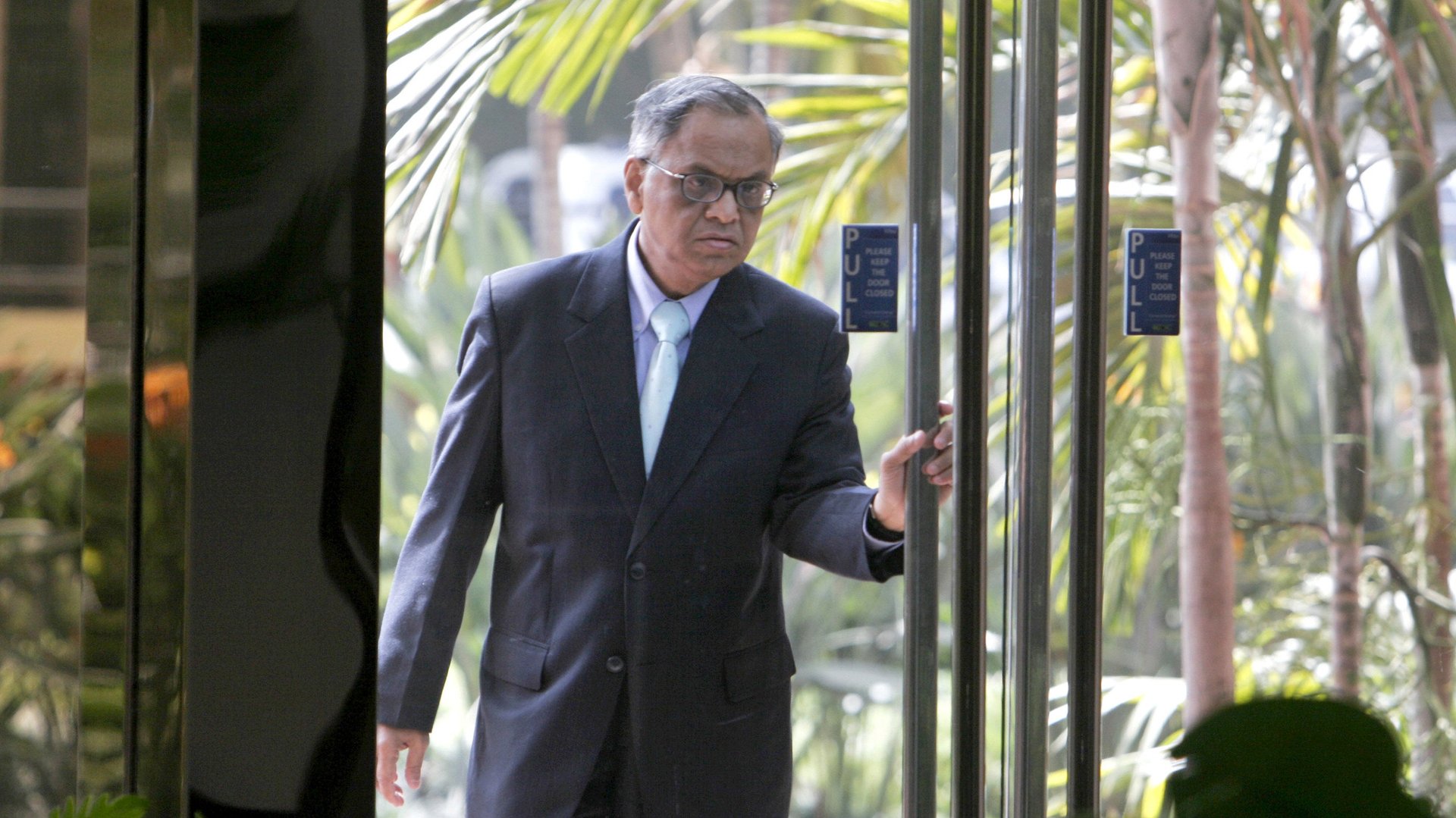Co-founder Murthy is back, but what troubled Infosys needs most is a break from the past
Infosys is now the latest company to turn to former managers to revive its fortunes, following in the wake of Procter & Gamble and JC Penney. Faced with falling market share, tepid revenue growth, and sagging employee morale, the Indian outsourcing giant is bringing back its co-founder NR Narayana Murthy as executive chairman.


Infosys is now the latest company to turn to former managers to revive its fortunes, following in the wake of Procter & Gamble and JC Penney. Faced with falling market share, tepid revenue growth, and sagging employee morale, the Indian outsourcing giant is bringing back its co-founder NR Narayana Murthy as executive chairman.
Murthy’s return was facilitated by a delicate realignment of the Infosys board. CEO and managing director SD Shibulal retains his post, while the current non-executive chairman, KV Kamath, who was appointed amidst much fanfare in 2011, will be re-designated as the lead independent director. The current executive co-chairman S Gopalakrishnan will be effectively demoted to executive vice-chairman.
In effect, Infosys will get more of the old, when what it needs is radical change.
Murthy, who started Infosys in 1981 with six other colleagues with $250 borrowed from his wife, is the architect of Infosys’s high margin business model—a strategy that has backfired as clients preferred to cut costs to tide themselves over the global economic slowdown. Murthy was also instrumental in adopting the rigid management structure that has allowed only founders to become CEOs so far.
Murthy’s return also raises some corporate governance issues. The Infosys board had to raise the age limit for the chairman’s post to 75 years to facilitate the re-entry of the 66-year old co-founder, a move that runs counter to Murthy’s own diktat that founders would retire at 60. Industry watchers have also questioned the decision to bring Murthy’s son, Rohan Murty, as executive assistant to the chairman. The move breaks the company’s unwritten code that nobody from the founders’ families would work at Infosys.
In the past two years, the company missed its own growth projections several times and was even forced to stop giving quarterly forecasts. Infosys was overtaken by younger rival Cognizant Technology in annual revenue, as a new strategy dubbed “Infosys 3.0” and designed to reduce its dependence on conventional information technology services, failed to take off.
In media interviews following the announcement of his return, Murthy hinted that he is willing to tweak the 3.0 strategy, saying that “in these complex environments people should be ready to revise the strategy as often as is necessary.”
But for Infosys to have a real shot at beating its nimbler rivals, Murthy’s priority must be to put a new management team in place. Shibulal, whose term ends in 2015, has faced immense criticism for the company’s recent underperformance, and today’s shuffle effectively renders him a lame duck CEO.
A new CEO will be able to move decisively to end Infosys’ obsession with margins and conservative approach towards acquisitions, and adopt an aggressive and flexible strategy. In effect, the core of Infosys that Murthy so carefully designed will have to be overhauled.
Murthy who refers to Infosys as his “middle child” faces the same quandary that parents face when they see their grownup children struggle. Their instinct would be to try to step in and fix the problem, but their interests would often be best served by advising and not meddling.
For Infosys to return to its former glory, Murthy ultimately must put his faith in fresh blood and new ideas.